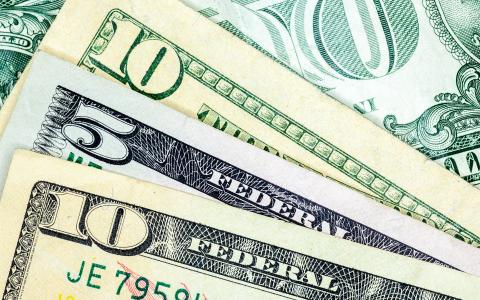
(Bloomberg) - The dollar surged to its strongest level in more than two years as growing concern about recession prompted investors to pile into haven assets and riskier currencies from Hungary to Colombia were smashed in a day of busy trading.


The greenback steamrolled almost everything before it on Tuesday, rising more than 1% against most major developed market peers and there was increasing speculation that it might soon reach parity with the euro. Turnover in currency futures climbed to the highest level in close to a month while the Bloomberg dollar index -- which measures it against a basket of major counterparts, climbed 1%.
Fear that a tightening of global monetary policy might hurt the economy helped spur a selloff in riskier markets on Tuesday, while growing concern about the energy crisis in Europe is weighing on assets there. Equities slumped, while crude oil dived. Treasuries rallied, dragging US rates down, but that did little to dent appetite for the greenback as yields in Europe and elsewhere tumbled even more.
Investors typically flock to the world’s biggest reserve currency in times of distress and that is helping to support the greenback along with expectations that interest rates in the US will remain higher than elsewhere even as yields have retreated somewhat. The Bloomberg dollar index climbed more than 5.7% in April-to June period, its best quarter since 2016,and has continued to rise since then.
“The USD continues to benefit from its role as a high-yielding safe haven across the board with the US economy still seen as relative unscathed by the energy crisis that has engulfed Europe,” said Valentin Marinov, a foreign-exchange strategist at Credit Agricole SA. This allows the Federal Reserve to stick to monetary-policy tightening, boosting the rate appeal of the dollar, according to Marinov.
The greenback’s surge is also being fueled by option demand and monthly hedging activity. With accounts building long option positions ahead of upcoming central bank meetings, one-year implied volatility on the Bloomberg dollar index has climbed above 10% and is around the highest since March 2020. Data from the Depositary Trust & Clearing Corp. showed a combined volume of over $20 billion of non-deliverable forwards traded in the euro, yen, pound and Canadian dollar, about double the daily average over the past three months.
One measure of greenback strength, the ICE dollar index, was on pace for its best day since March 2020. With a weighting of more than 57% toward the euro, the index is heavily influenced by the drop in the common currency. But accounts appear to be actively adjusting positions across several currencies.
The euro slumped to its weakest level in almost two decades against the greenback, as traders bet that the European Central Bank will go slower on raising interest rates. The common currency, which has tumbled in the wake of the Ukraine war, fell as much as 1.8% to $1.0235, its weakest level since December 2002.
The Russian ruble, which has been buoyed recently by capital controls implemented in the wake of international sanctions, was the biggest decliner in Tuesday trading. It tumbled around 10%, blowing past the 60 per dollar level. The Hungarian forint was also under pressure, falling close to 3% against the dollar and hitting a record low versus the euro, while emerging market currencies from Turkey to Brazil notched up significant declines.
“What initially looked like broad based EUR weakness has spread to HUF, NOK, PLN and SEK that are now leading losses in FX majors space,” said Kristoffer Kjaer Lomholt, head of FX and corporate research at Danske Bank A/S in Copenhagen.
In Latin America, Chile’s currency was the biggest loser on the day, while Colombia’s peso plumbed new all-time lows as traders speculate about the prospects for the country under its new leftist leader. And in Asia, currencies were also under pressure Tuesday, although most regional markets were closed for the day before a fresh wave of risk aversion swept through global markets in the US session.
(Updates with futures and options market detail.)
By Yvonne Yue Li and Robert Fullem



